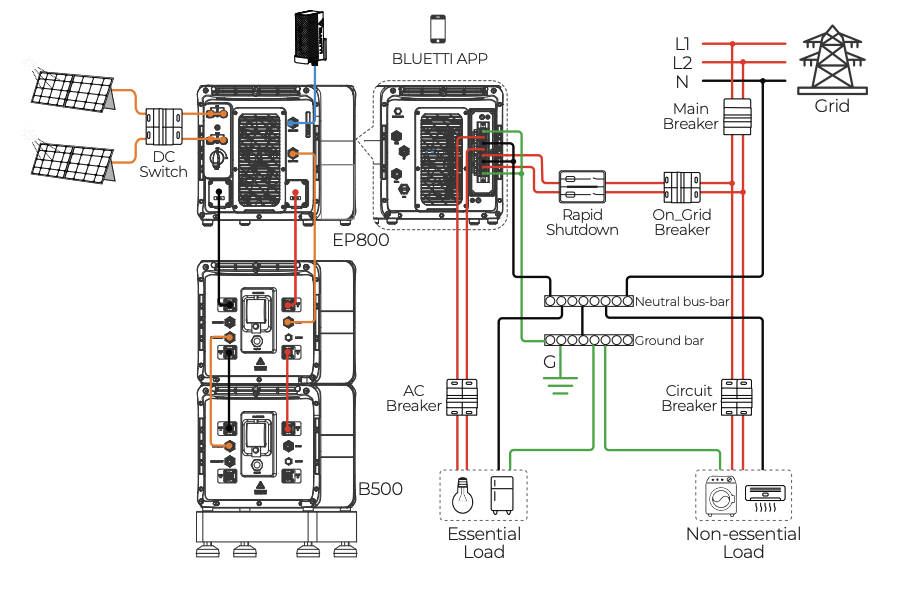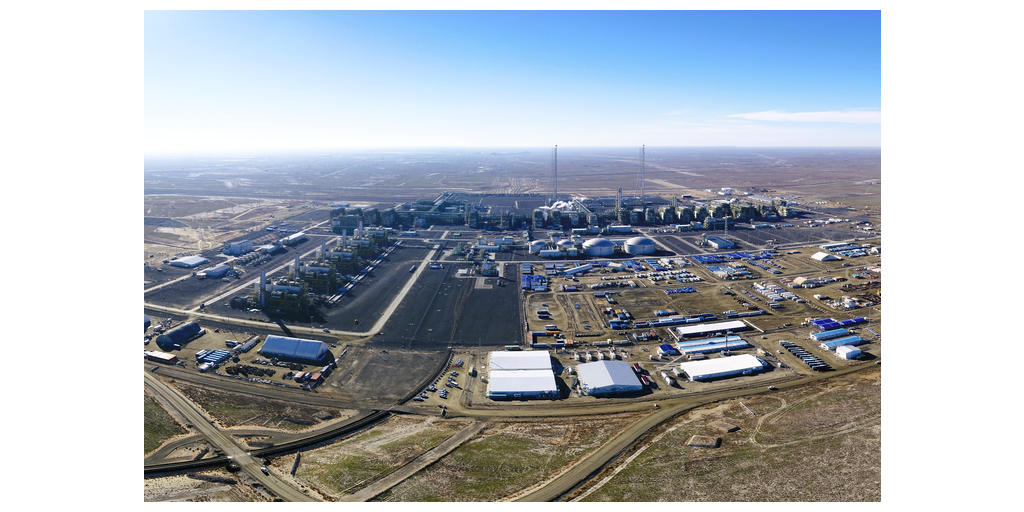Sign up for daily news updates from CleanTechnica on email. Or follow us on Google News!
BLUETTI was an early mover into the portable power station market and has quickly taken up a dominant position in both sales numbers and a wide range of innovative products.
Building on its experience in the portable power station market, BLUETTI is launching its very own grid-tied home energy storage system. The system utilizes BLUETTI’s mastery of smaller portable power stations and solar, building them into a grid-tied system that lives in the home. The unit stacks in a modular fashion, allowing the homeowner to determine exactly the amount of energy storage capacity they need for their specific application. This saves the homeowner money and allows them to incrementally step the system up in size over time as there needs change.
BLUETTI generously hosted CleanTechnica at RE+ this year in Las Vegas where we sat down with CEO Longman Li to learn a bit more about BLUETTI, their Lighting an African Family initiative, and their new flagship home energy storage system.
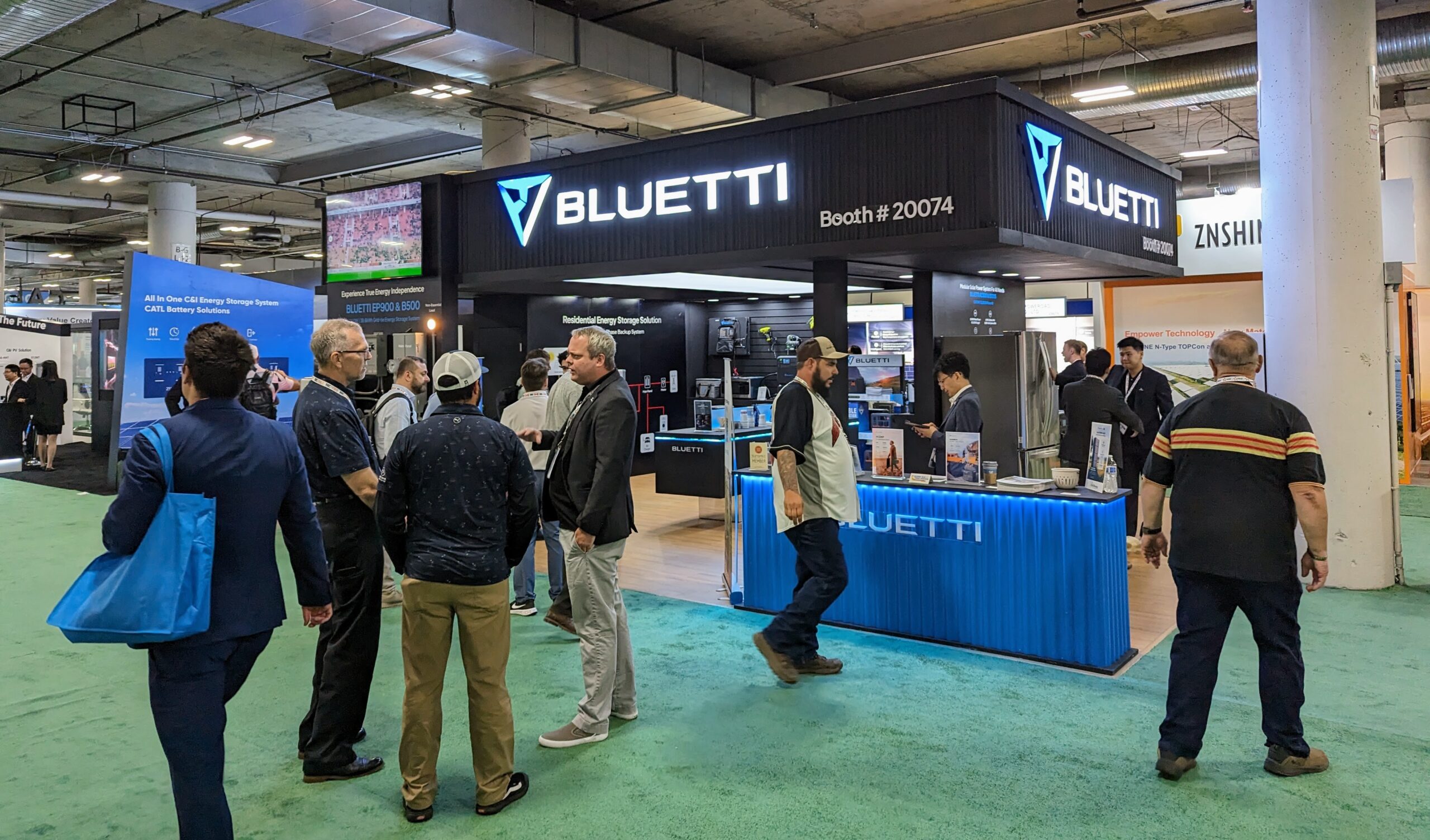
The BLUETTI booth at 2023 RE+ showcased their portfolio of portable and home energy storage solutions. Image credit: Kyle Field, CleanTechnica
BLUETTI’s home energy systems start with the BLUETTI EP900 base unit, which is the brains of the system. The EP900 houses the 9,000 watt inverter, the grid connection, and the solar inputs, among other things. From there, storage capacity can be added in 5kWh increments by stacking BLUETTI B500 battery modules under the EP900.
The result is a stacked tower of energy storage capacity that can range anywhere from 10 kWh with two B500s attached up to 19.8 kWh with four B500s. In total, the system itself can scale up to 39.6kWh of storage capacity which, coupled with the EP900’s 9,000 watt output capacity, can keep just about any house online whether connected to the grid or not.
Installing a BLUETTI Home Energy Storage system is understandably more complicated than using a standard portable power system, as it has to be wired directly into the home’s electrical system. As such, the wiring and electrical connections must be made by a certified electrician, but it is rather straightforward.
The EP900 must be wired into the electrical panel through a rapid shutdown device and its own AC circuit breaker. This ensures no power will be fed back to the grid when the grid goes down and allows the BLUETTI system to “island” the home from the grid during an outage.
On the consumption side, an AC breaker can then be wired to a critical loads panel where everything that will be powered on during a grid outage must be connected. This is very common in residential solar and storage systems and isn’t something that’s BLUETTI-specific. Isolating circuits in a critical loads panel typically requires a new sub panel and new circuit breakers, but the specifics of each installation will vary depending on where it’s being installed.
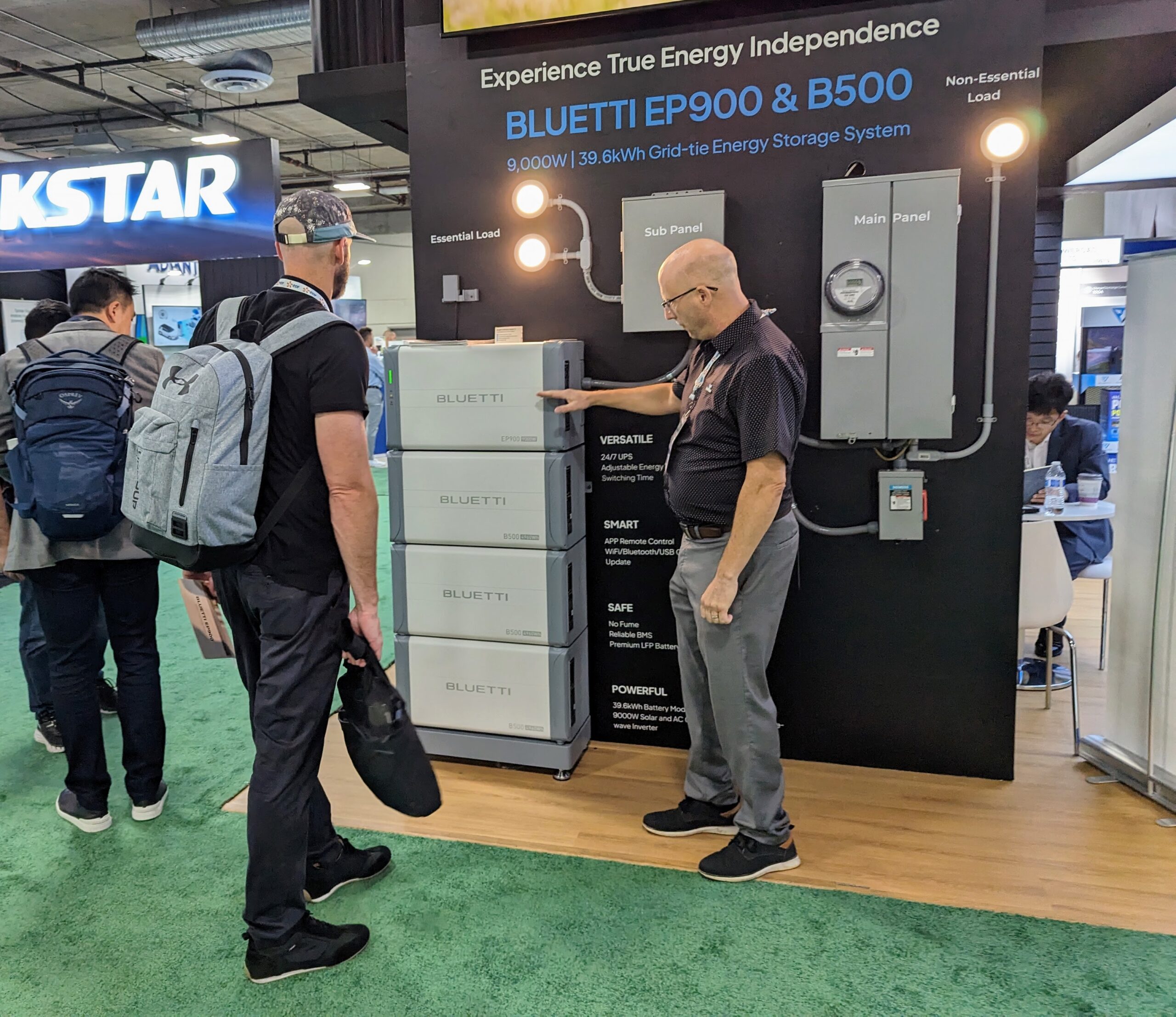
One of BLUETTI’s representatives explaining the benefits of the EP900 and B500 Home Energy Storage system to an attendee. Image credit: Kyle Field, CleanTechnica.
After the AC connections are made to the grid and the critical loads panel, the solar system can be wired into the BLUETTI Home Energy System. Solar connects directly to the EP900 unit itself, with incrementally more solar that can be added to each B500 unit that’s connected. With two B500 batteries connected, 5kW of solar can be connected, with three B500s that increases to 7.5kW, and up to 9kW of solar when four B500s are connected.
Connecting solar panels directly allows BLUETTI’s system to use the incoming DC from the solar panels to directly charge the DC batteries without having to go through an unnecessary DC to AC conversion and back to DC to store in the batteries.
BLUETTI CEO Longman Li shared that an electrician is required to perform the initial connection to the home’s electrical system, but that additional batteries can be added without the need for any additional visits. That makes it easy for customers to install a base system and increase the capacity of their system as their needs change over time.
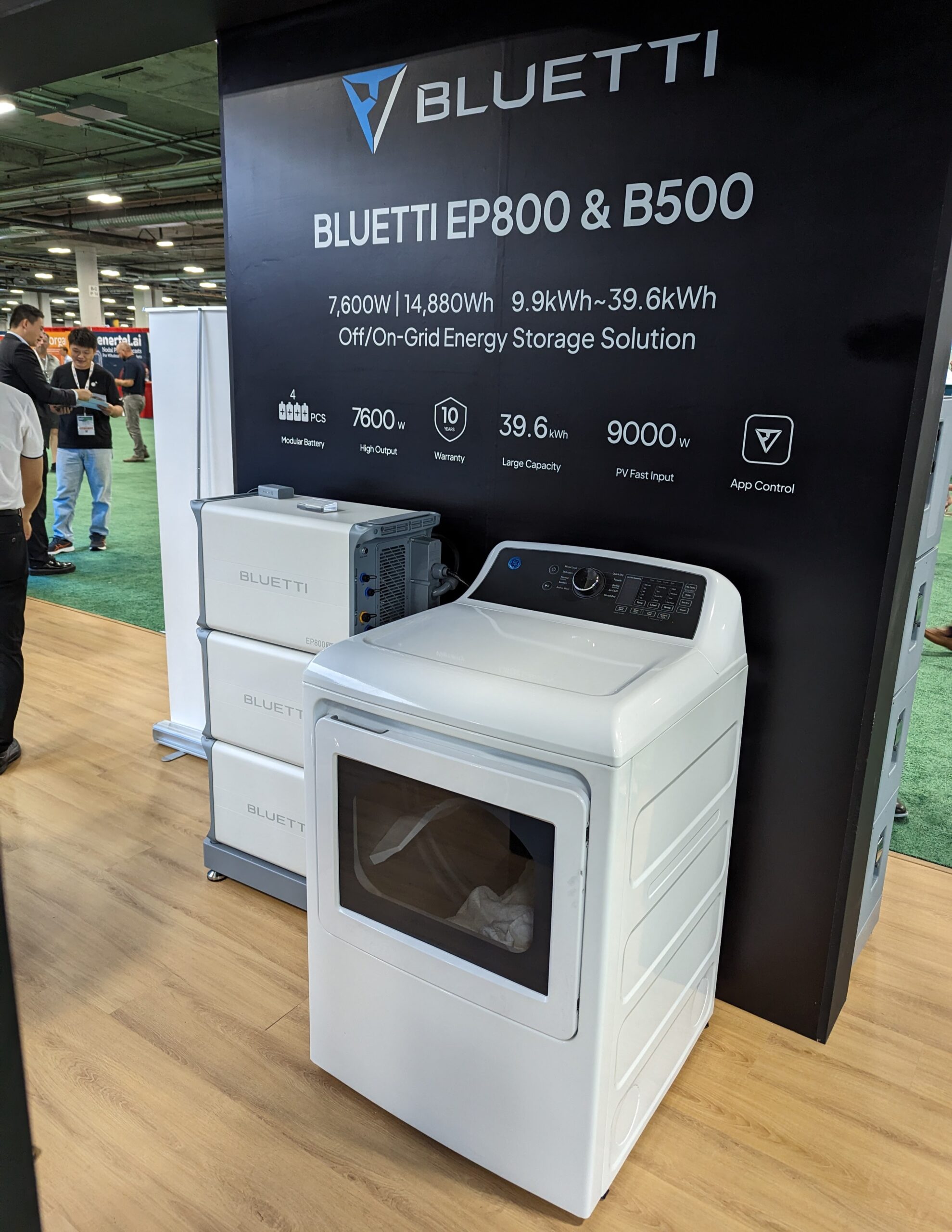
The smaller BLUETTI EP800 also offers a scalable, modular home energy storage system for the home, but with a lower output power of 7,600 watts. Image credit: Kyle Field, CleanTechnica
Li explained that their Home Energy Storage system has three primary use cases:
- Backup battery — Use the battery to keep critical loads running when the grid goes down.
- Self-consumption — Optimize consumption of the home by using locally produced solar first, pull from the battery second, with the grid as the last resort. This keeps as much locally generated power behind the meter as possible, reducing the taxes generated by pushing and pulling solar power produced to and from the utility.
- Time of Use — This mode avoids using power during peak periods which are typically from 4pm to 9pm. “From 4pm to 9pm, if you can shut down the utility, you can save a lot of money,” Li said.
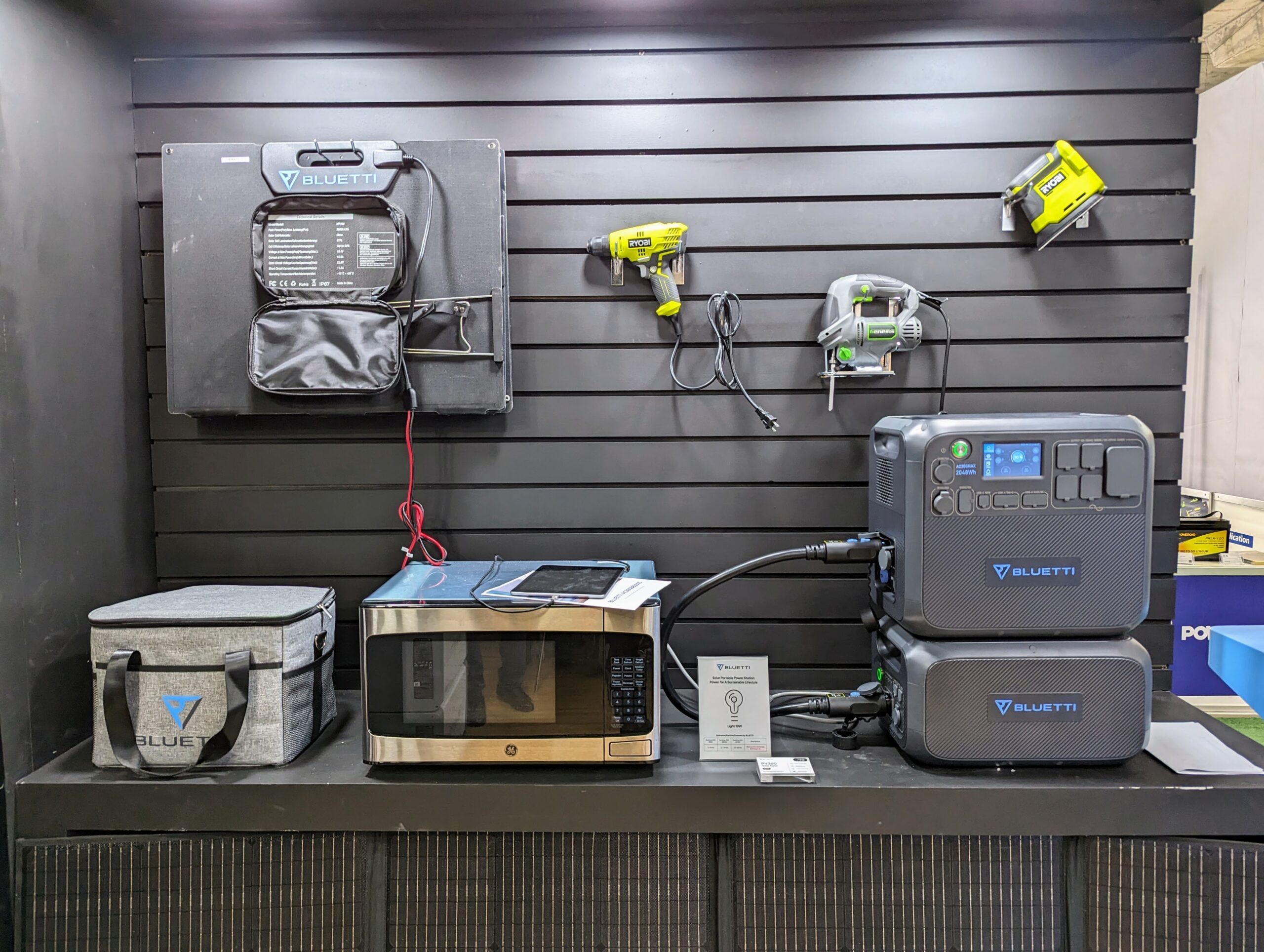
BLUETTI’s portable power stations were also on display in their booth. Image credit: Kyle Field, CleanTechnica
Using the battery to charge from the grid when power is cheap and selling it back when it’s expensive is not the most beneficial due to the system’s AC round trip efficiency of 83%. That translates to a 17% loss in the AC power coming in to the AC power going back out. On the DC side, charging the batteries from solar is more than 87% efficient, according to the BLUETTI engineer we spoke with at the show.
BLUETTI is exploring implementing a Virtual Power Plant as well, but that’s still a ways out into the future. “Our R&D is doing some research into VPPs, but it’s about operations and service,” Li said. “We provide hardware, so that’s a different business for us.”
It’s exciting to see BLUETTI pushing into the new home energy storage market, introducing a new modular option for customers. It’s not clear if their products will qualify for the same incentives as more established energy storage systems from LG and Tesla, but it stands to reason that they would after jumping through all the usual regulatory gates.
For more information about BLUETTI’s EP900 and EP800-based Home Energy Storage systems, head over to their website at bluettipower.com.
Specs
BLUETTI EP900 General
- Scalability: With 2~4 B500s (From 9.9KWh~19.8KWh)
- App Control: BLUETTI APP via WiFi or Bluetooth
- Warranty: 10 Years
- Protection Grade: IP65
- Noise: ≤50 dB (A)
- Working Temperature: -4℉~122℉ / -20℃~50℃
- Relative Humidity: 5%~95%
BLUETTI EP900 Solar Inputs
- Maximum Input Power: 9kW with 4xB500 batteries connected, 7.5kW with 3xB500 batteries connected, and 5kW with 2xB500 batteries connected
- MPPT Channels: 2 (3,000W + 6,000W)
- Array In Series: 1/2 (3,000W + 6,000W)
- Maximum Input Voltage: 550V
- MPPT Voltage Range / Rated: 150V~500V / 360V
- Single MPPT Maximum Input Current: 12.5A / 25A
- Single MPPT Maximum short circuit current: 15A/30A
- MPPT Efficiency: 99.90%
- PV Inversion Efficiency: 97.0% Max.
- Protection: Reverse Polarity Protection, Insulation Resistance Detection, Arcing Detection
BLUETTI B500
- Battery Type: Lithium Iron Phosphate Cells (LiFePO4)
- Rated Capacity: 4,960Wh / 5 kWh
- Usable Capacity: 4,464Wh / 4.5 kWh
- Protection Grade: IP65
- Noise: <25dB
- Operating Temperature:
- Charging: 32℉~104℉ / 0℃~40℃
- Charging when grid tied: -4℉~104℉ / -20℃~40℃
- Discharging: -4℉~104℉ / -20℃~40℃
- Storage Temperature (with at least one charge cycle per month): -4℉~104℉ / -20℃~40℃
- Storage Temperature (with at least one charge cycle every six months): 32℉~95℉/ 0℃~35℃
- Working Humidity: 5%-95%
- Working Altitude: <2,000m
Disclaimer: BLUETTI paid for a portion of the author’s travel expenses to attend RE+.
Have a tip for CleanTechnica? Want to advertise? Want to suggest a guest for our CleanTech Talk podcast? Contact us here.
EV Obsession Daily!
I don’t like paywalls. You don’t like paywalls. Who likes paywalls? Here at CleanTechnica, we implemented a limited paywall for a while, but it always felt wrong — and it was always tough to decide what we should put behind there. In theory, your most exclusive and best content goes behind a paywall. But then fewer people read it!! So, we’ve decided to completely nix paywalls here at CleanTechnica. But…
Thank you!
Community Solar Benefits & Growth
CleanTechnica uses affiliate links. See our policy here.

